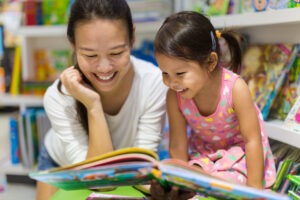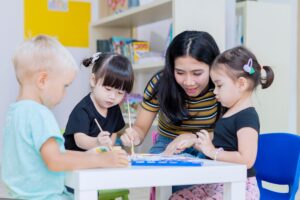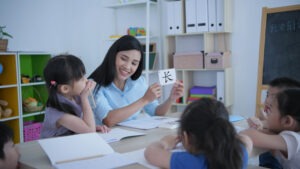BACK
How Local Kindergartens Differ From International Kindergartens in Singapore
In Singapore, the diversity of educational options reflects the cosmopolitan nature of the country. Among these options are international and local kindergartens. Each caters to the needs of young learners but does so with different philosophies, approaches, and cultural contexts.
Understanding the differences between them can provide valuable insights for parents seeking the best fit for their children’s early education.
Curriculum
At the heart of any educational institution lies its curriculum, shaping the learning experiences of young minds. In local kindergartens, the curriculum typically aligns with the Singaporean educational framework, focusing on foundational skills in languages, mathematics, and social development. This curriculum often integrates elements of local culture, among Indians, Malays and Chinese, to instil a sense of national identity from an early age. This curriculum sets a foundation for primary school education in Singapore.
Conversely, international kindergartens often follow globally recognised curricula such as the International Baccalaureate (IB) Primary Years Programme (PYP) or the Montessori method. These curricula overlap with the local educational methods but prioritise inquiry-based exploration. Your child may be more exploratory in their learning as a result but they might also have a harder time mastering reading and writing.
While the international curricula have their merits, they are not designed to prepare students for primary school education in Singapore. So, if you intend to eventually enrol your child in a local primary school, you should consider whether an international kindergarten would serve their interests best.
Language of Instruction
In local kindergartens, the primary language of instruction is English for various subjects and interactions. Reflecting Singapore’s bilingual education policy, though, there are also classes on Mandarin, Malay and Tamil, catering to the needs of different ethnicities. If you want your child to be adept at their mother tongue and be more prepared for the subject in primary school, a local kindergarten may be ideal.
In contrast, international kindergartens predominantly use English as the primary language of instruction. Depending on the expatriate community they serve, though, these schools may also offer other international languages as a second subject, such as French or Spanish.
Student Population
The composition of the student population plays a significant role in shaping the learning environment and cultural dynamics within kindergartens. In local kindergartens, the majority of students are typically Singaporean citizens, of Indian, Malay and Chinese origin, or permanent residents from diverse ethnic backgrounds. This demographic diversity enriches the educational experience, allowing students to interact with peers from different cultural traditions and perspectives.
International kindergartens are diverse in terms of ethnicity but they also mainly comprise a particular student population, which is expatriate children. Students get to learn about Singapore in international school but they may not be as attuned to local traditions and culture as their peers in local kindergartens.
Kindergarten Fees
One of the biggest differences between local and international kindergartens is the cost. Local kindergartens are generally more affordable, with greater subsidies. If a kindergarten is ECDA-accredited it also has to abide by a monthly fee cap.
International schools, on the other hand, generally have expensive tuition fees, even if you are eligible for certain subsidies. The tuition fee schemes can also vary widely based on the schools’ curricula and facilities.
Location
Local kindergartens tend to be distributed evenly across different neighbourhoods in Singapore. So, it’s easy for parents to find one close to their home. This also helps parents make friends with fellow parents in their community. Their children, in turn, can also form relationships with each other. Local kindergartens, in essence, can help families connect better with their neighbourhood.
International kindergartens tend to be located in city centres, including Orchard Road and Bukit Timah, where expatriates reside. Even if you are not an expatriate, you may benefit from these locations if they are near your office. Do factor in the commute time for your child, though, when making your decision.
Enrol in The Little Skool-House: Getting The Best of Both Worlds
In choosing a kindergarten for their children, parents have many factors to consider. At The Little Skool-House, we understand how important it is for parents to feel confident that their child’s preschool will provide them with a comprehensive education.
That’s why our curriculum is designed to not only enhance your child’s reading and writing skills but also encourage their curiosity through play and sensory learning. We’ve programmes bridging art, music, sports, performing arts and STEM.
We believe parents looking for a local kindergarten should not have to worry about compromising their child’s creativity and curiosity. Primary school readiness can go hand in hand with an enriching education.



